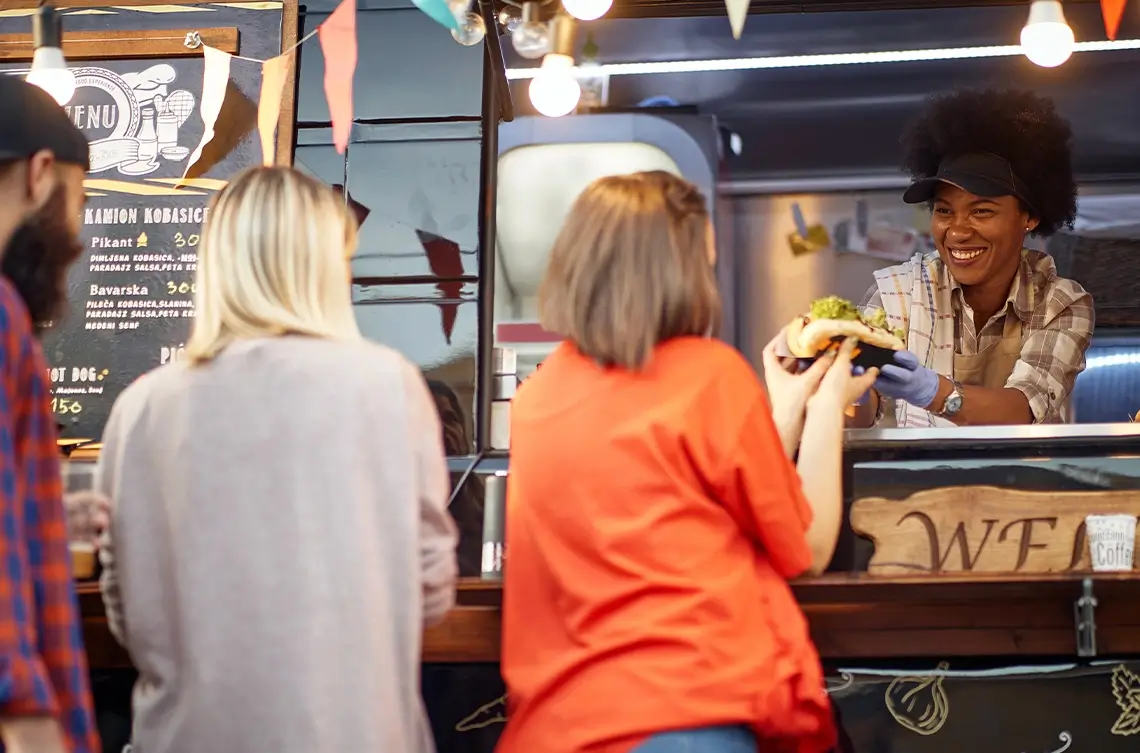In today’s digital age, having a strong online presence is crucial for any business, especially for local restaurants. With more people searching for dining options online, it’s important for small or local restaurants to make themselves easily discoverable. Let’s explore effective strategies that can boost your restaurant’s online presence, help you get found online, and attract more customers.
1. Leverage Google My Business and Other Restaurant Platforms
One of the first steps to improving your restaurant’s online presence is creating a Google My Business account. This free tool allows you to create a detailed business listing, including your address, phone number, opening hours, and even customer reviews. You can also link to your website, and add photos of your restaurant, food, and menu. Customers can also upload photos of your tasty meals! By optimizing your profile with accurate information and high-quality images, you increase the chances of appearing in local search results.
Additionally, consider listing your restaurant on popular review platforms like Yelp, TripAdvisor, and Zomato. These platforms allow users to find and review local restaurants, making them valuable resources for potential customers. Regularly update your profiles, respond to customer reviews, and provide accurate information to build credibility and attract more diners.

2. Develop a User-Friendly Website with a Menu
Creating a professional website for your restaurant is a powerful way to showcase your offerings and establish an online presence. Make sure your website is visually appealing, easy to navigate, and mobile-friendly. Include essential information such as your location, contact details, and opening hours. Most importantly, prominently feature an up-to-date menu that is visually appealing and easy to read.
There are a lot of website builders that make it very easy to create your website for an affordable price. While you’ll have to build it yourself, it’s usually fairly simple and again, much cheaper than hiring a pro. Of course, a professional is always an option if you don’t have the time. An important consideration when choosing your site is if you can set up online ordering, if you want to. At Hazlnut, we offer online ordering websites and can also develop custom mobile apps. You can link to the ordering site on your website or use it as your main site!
3. Conduct Keyword Research for Local Search Optimization
To increase your restaurant’s visibility in online searches, conduct keyword research to identify relevant terms that potential customers might use when looking for dining options in your area. Use tools like Google Keyword Planner or SEMrush to find keywords with moderate search volume and low competition. Note that both require an account, though Google is completely free and SEMrush’s free plan is a bit limited. Focus on local keywords that include your city or neighborhood name, cuisine, or unique features of your restaurant.
Let’s say you own Tacos NY, a Mexican restaurant in Queens, New York. Some great starter terms include:
- Restaurants in Queens
- Mexican food in Queens
- Tacos in Queens NYC
- Restaurant Queens outdoor seating
- Mexican food in Queens with drinks
- Queens Mexican open Sundays
As mentioned above, try to focus on keywords with a decent amount of search volume that aren’t too competitive. Having good search volume increases your chances of being seen by anyone. And, focusing on low-competition terms makes it easier for your website to show sooner in the search results. After all, people very rarely scroll past the first page.

4. Optimize Your Website’s Title and Meta Description
Once you have identified the target keywords, optimize your website’s title and meta description accordingly. The title tag should include your restaurant name and relevant keywords, while the meta description should provide a concise and compelling summary of your restaurant’s offerings. These elements appear in search engine results and can greatly influence click-through rates.
If you have multiple pages on your website, update this on each page you think is relevant to your customers. This can include your home page, your contact page, catering page, and any menu pages. Keep your new titles and meta descriptions fairly short – they’ll get cut off if they’re too long. Your title should be around 50-60 characters and your meta description should be under 160.
Using the example above, Tacos NY, that Mexican restaurant in Queens may opt for:
Title: Mexican Restaurant in Queens | Tacos & Drinks | Tacos NY
Meta Description: Tacos NY Mexican food in Queens. Open every day, 12pm-10pm. Serving tacos, burritos, drinks, and more. Located at 200 N 1st Ave. Order in-store or online.
5. Embrace Social Media and Engage with Customers
Social media platforms offer a valuable opportunity to engage with customers and build a loyal following. First, create accounts on platforms like Facebook, Instagram, and Twitter, and regularly post high-quality content that showcases your dishes, highlights promotions, and shares updates about your restaurant. Then respond to customer comments and reviews promptly to demonstrate your commitment to excellent customer service.

6. Create a Newsletter for Loyal Customers
Everyone loves to be a part of something! Although email has seen some drop-offs in performance, there are plenty of great email marketing services out there. Some even offer free plans, like MailChimp! If you can start prompting customers and potential customers to sign up for your email list, you’ll start building a more loyal customer base. Think of it as something supplemental to other platforms like social media.
7. Run Targeted Ads on Google and Social Media
Advertising on Google Ads and social media platforms like Facebook and Instagram can significantly enhance your restaurant’s online visibility. Utilize targeted advertising campaigns to reach potential customers in your local area. Set a budget, define your target audience based on location, demographics, and interests, and create compelling ads that entice viewers to visit your restaurant. Then, monitor and analyze the performance of your ads to optimize your strategy over time.
Even a small budget can have a huge impact on your restaurant. Consider offering a coupon for visitors that fill out a short form that collects their name and email address. They’ll be more enticed to come in for a great deal, and you’ll be able to fill up that email list you created!
8. Encourage Online Reviews and User-Generated Content
Positive online reviews play a crucial role in attracting new customers and building trust. Encourage your satisfied customers to leave reviews on platforms like Google, Yelp, or TripAdvisor. Offer incentives like discounts or freebies for customers who share their experiences on social media using your restaurant’s designated hashtags. User-generated content is a powerful marketing tool that can attract more customers to your establishment.
Boosting Your Restaurant’s Online Presence…
In today’s digital landscape, a strong online presence is paramount for the success of small and local restaurants. By implementing the tips mentioned above, you can increase your restaurant’s visibility and attract more customers. It does take a bit of work, but if you take the steps to improve your online presence, you can see some amazing results.







